UX/UI DESIGN
PRODUCT DESIGN
WHY?
A real estate agents job at its core is to help customers realize the dream of home ownership on their terms and at the best value. It's a fast-paced environment where numbers dictate where time is spent, but due to the faced paced nature, quantifying the quality of the work is lost in keeping up with demands on time and effort.

CHALLENGE
A day in the life of a listing or buying agent is extremely hectic. Time management, great financial sense, and an eye for metric trends are principal attributes that lead to success. Combining this in a centralized place would help agents reach their full potential.
DISCOVERY
Interview and research were the staples in uncovering the issues faced when navigating the world of real estate. Surveying agents in different phases of their career as well as agents with different technical aptitude helped determine the direction a solution would have to go to be all encompassing.
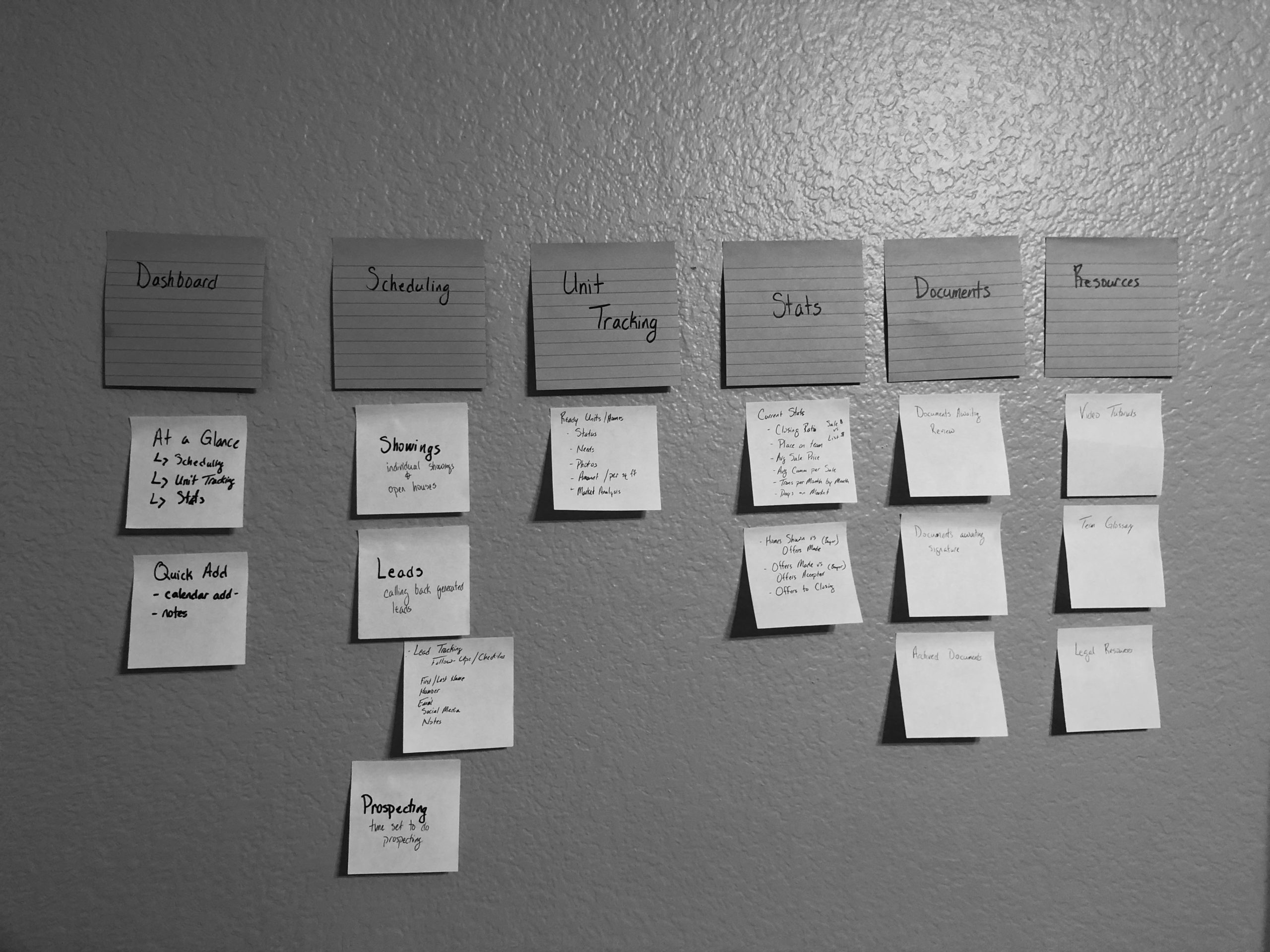
Taking the most often mentioned hurdles in their daily workload, a site map was made based on the responses
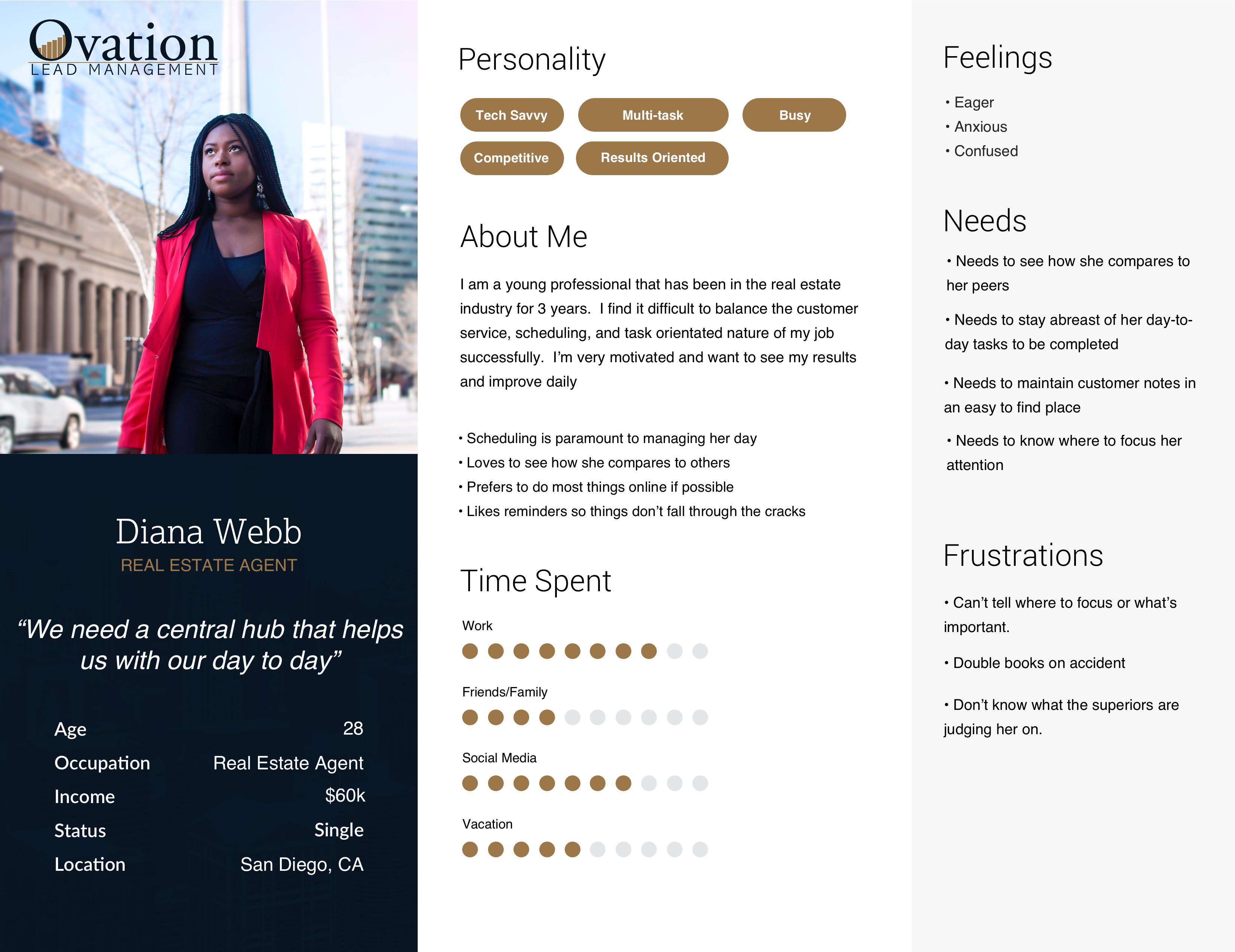
PERSONA
The persona created was that of a typical agent based on the surveys and interviews conducted. The feelings, needs, and frustrations respresented the median experianced on a daily basis
WIREFRAMES
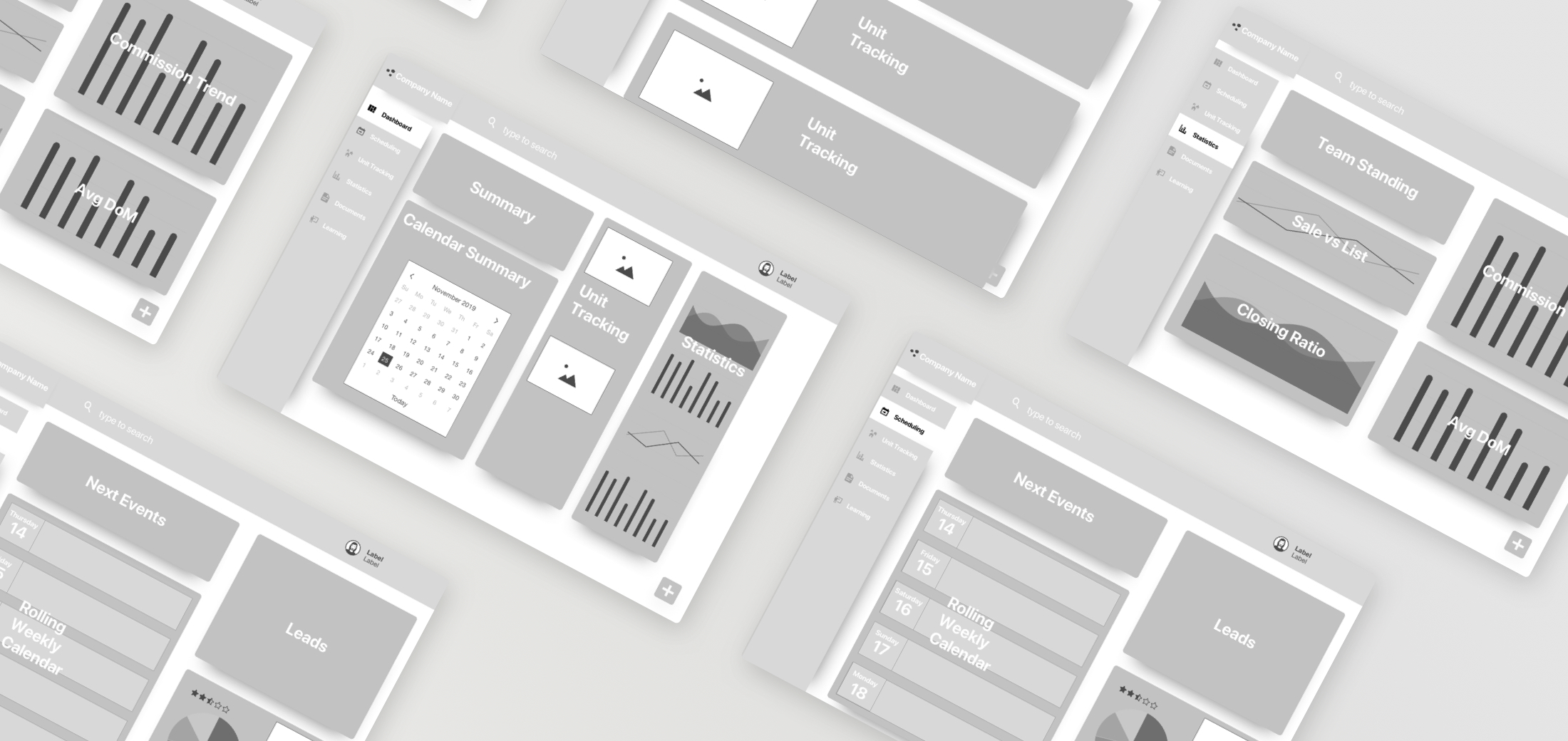
Wireframing was extremely iterative during this project because speed and ease of use was so important to the user. This was the most fruitful part of the process because of the feedback received and the impact small changes had to the success of the solution.
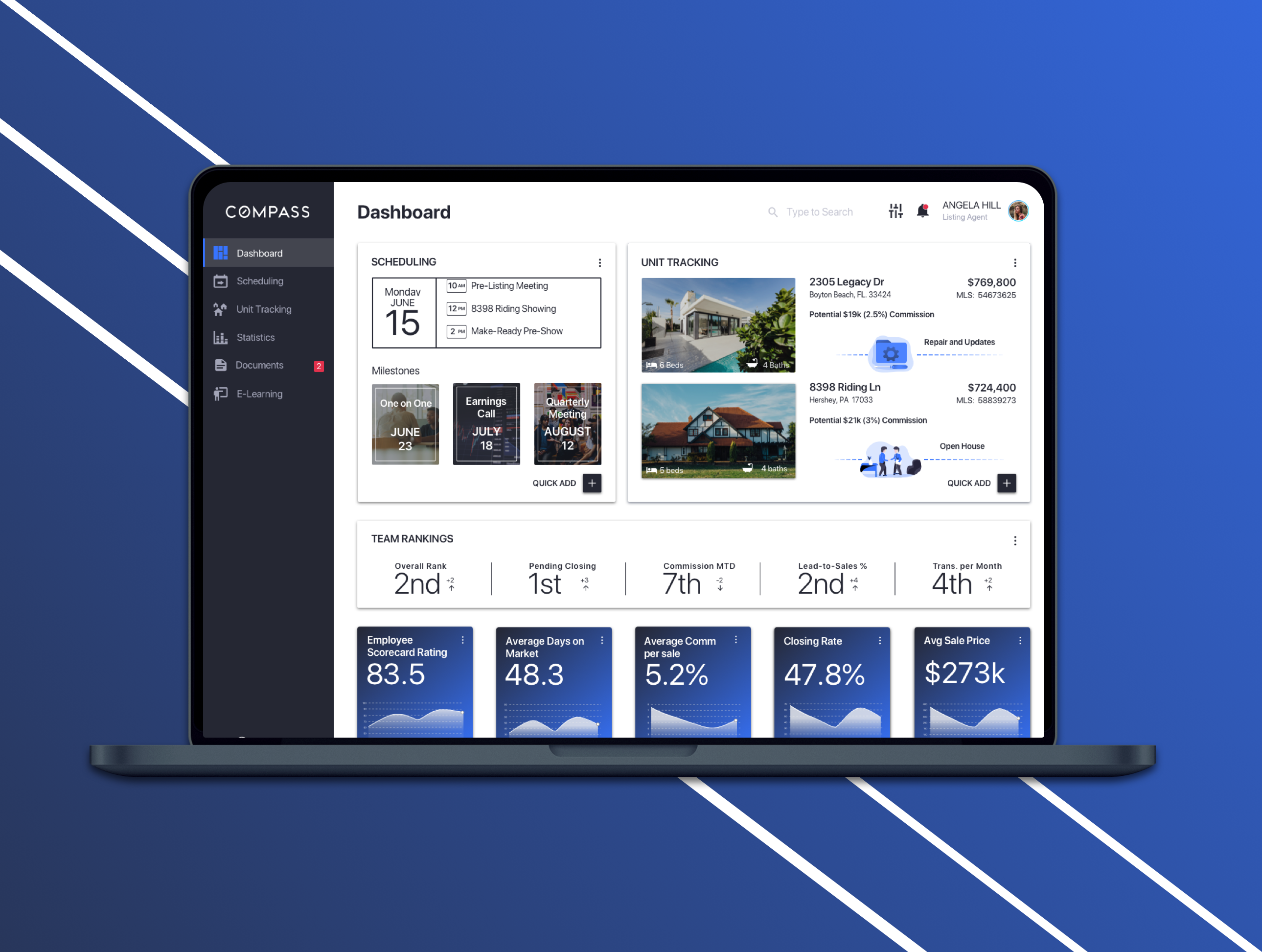
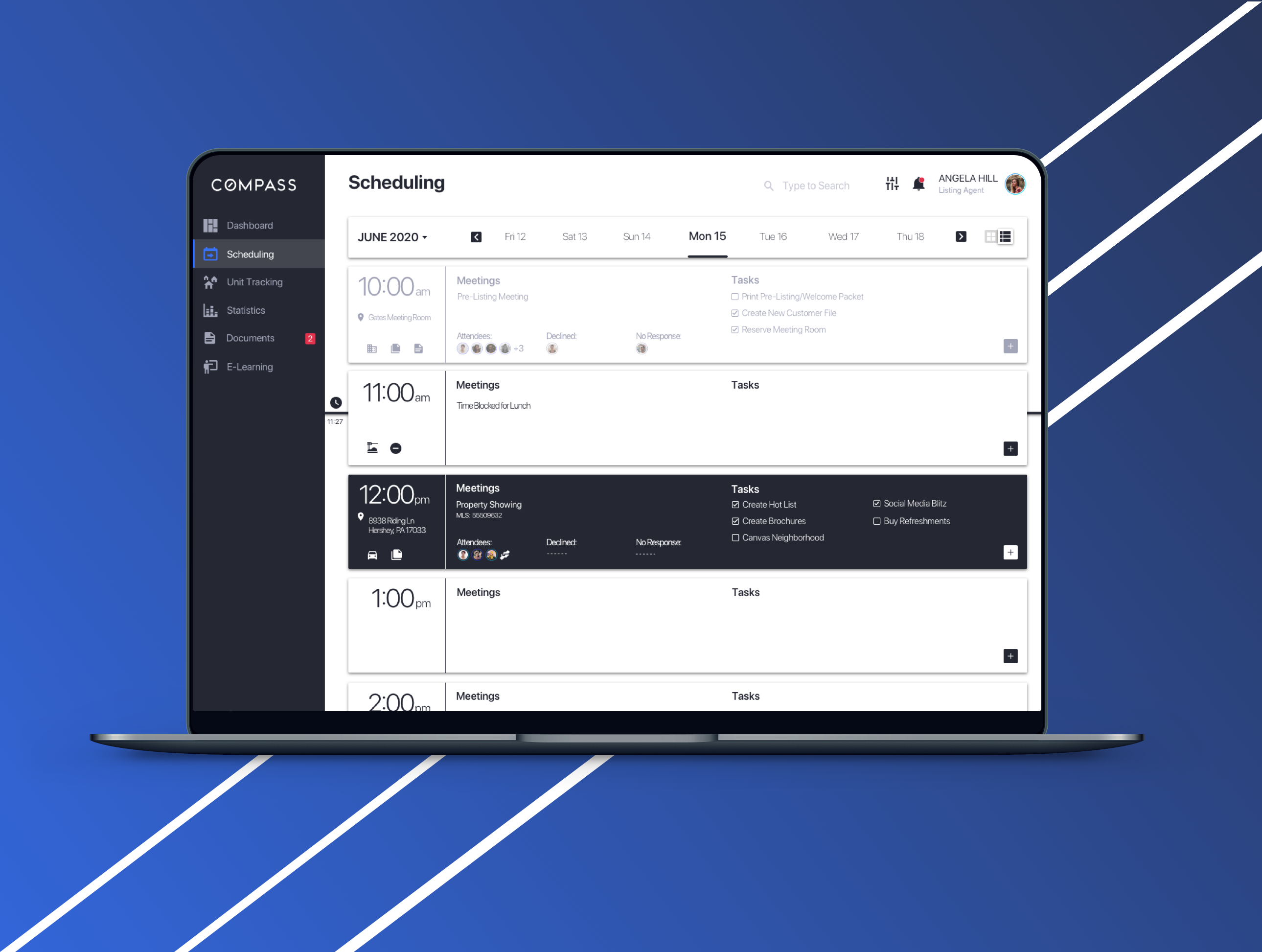
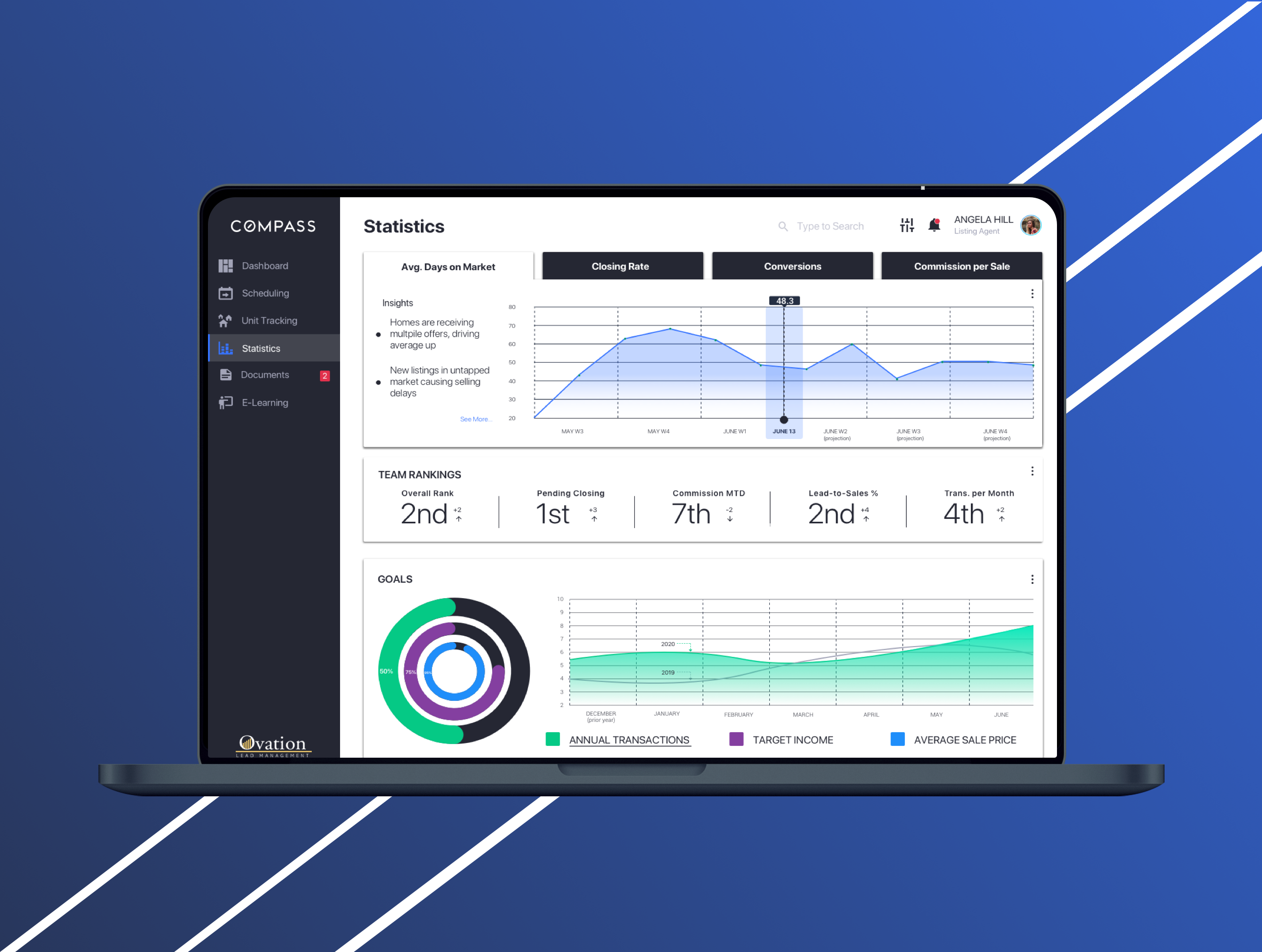

PROTOTYPE
From the data gathered a prototype was created to provide a solution for the problems identified from the discovery phase. Even after a prototype was created, the process remained iterative with the goal of making a solution that woould elevate the user and push them toward their individual and team goals. "If a picture is worth a thousand words, a prototype is worth a thousand meetings."
TAKEAWAYS
One of the major lessons learned was that the users point of view and needs takes precedent over any pre-conceived notions prior to the Discovery stage. Testing is extremely important and will lead the design team on the path to creating a viable solution. Also, making sure to pay close attention to expert user interviews helped differentiate between user needs and "nice to haves" to determine the true minimal viable product. .
